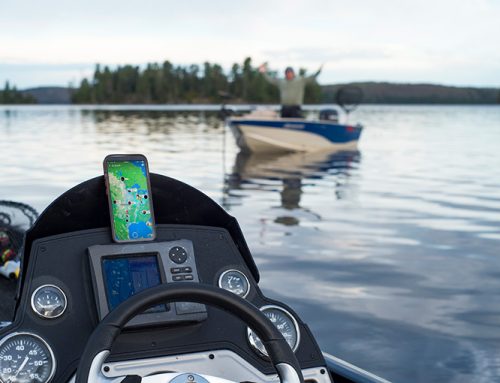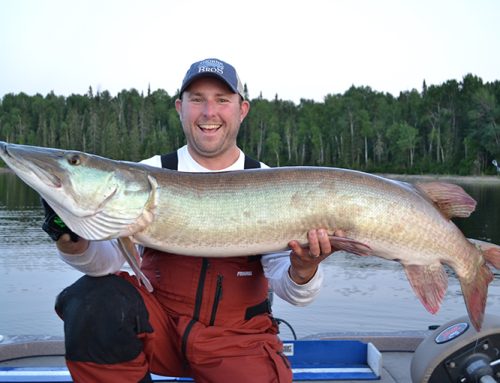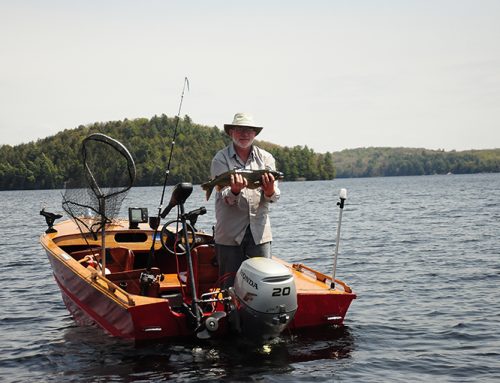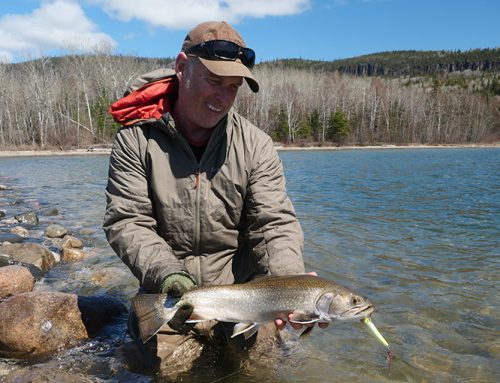
A longstanding debate amongst trout fisherman is whether pre-tying spawn sacs before a trip is better than tying individual sacs on-the-go. While pre-tying spawn sacs offers convenience while fishing, tying on-the-go can help you reel in more fish.
Recently I got into this debate with a fishing buddy. His opinion was that by pre-tying roe an angler can cash in on a hot bite faster than the angler kneeling on the bank with a sticky handful of loose roe. He added that though he was pre-tying, he could make different size spawn sacs to fit fish preference during a trip.
Valid points, but what about sacs that are the wrong colour, or have too many or too few Styrofoam floats in them? For the weekend angler, these sacs might be banished to the fridge for next week, where that roe is not getting any fresher.
In my experience roughly half of my pre-tied roe goes bad and ends up in the trash.
Pre-tying roe means an angler must run through many scenarios, which dictate how many of each colour, size, and flotation need to be tied. Naturally each variation must have a few backups in case it becomes the successful bait; soon you’ve tied 50 sacs and perhaps not the right one.
…soon you’ve tied 50 sacs and perhaps not the right one.
In contrast, tying on-the-go allows you to change the smallest detail in your bait, whether it’s under a float or bottom-bounced. This can play a major role in not only reducing waste but in how many fish hit the bank, as trout are finicky creatures and paying attention to the smallest details often makes a substantial difference.
As it’s usually impossible to know how stained water will be prior to an outing, many anglers find their pre-tied spawn either too large for clear water or too small for stained flows. Tying on-the-go allows you to survey, test, and easily adapt to dynamic water conditions.
Tying on-the-go offers these advantages to detail-savvy anglers who want to perfect their presentation. However, there are instances when pre-tying can lead to a more enjoyable and successful trip.
Some rivers have more consistent water conditions than others, or have trout that are known to prefer certain bait regardless of water clarity. In these cases, scrutinizing spawn sac colour and size may be an over-complication.
Bottom line: anglers who pre-tie their spawn sacs have some advantages in terms of convenience over anglers who opt to tie on-the-go, but the latter can definitely be the more effective approach, allowing for those small adjustments crucial to hooking that finicky trout.

Which do you prefer pre-tying or tying on-the-go? Have your say in our comments below.






My neighbor gives me pre-tied sac baits always in hunter orange… Id love to learn how to do this, and in a few different colors. Does anyone know a site that shows how and what you need to tie sacs?
Thanks
Hi, Dale
Watch OOD columnist Luigi De Rose’s video on curing trout and salmon eggs.
https://youtu.be/CEgqmhVFHpE
You need to cure eggs before you tie them into bags.
There are a few commercial contraptions (Atlas Spawn Sac, MelNak Baitmaker Egg Sac Tying Machine) on the market that aid in tying roe bags — they basically just act as a third hand holding things in place while you work — but the logistics are simple: add, with a spoon, cured roe to store-bought pre-cut square mesh bags, your colour of choice. How much roe you add will depend on the size of bags you want (think water colour and clarity) and the type of eggs. Salmon eggs are larger than trout eggs, so you generally need less. Fold the corners of the square mesh bag together and tie off at the pinch-point of your thumb. At this point your eggs should be packed in a bag-like configuration, not too tight and not too loose.
Now you just need to tie it off and trim. Many anglers prefer a stretch thread, like Spider Thread. It comes on a tube. You wrap it around the bag at the pinch-point and then snap it off, with no need for knots because it binds to itself. It makes tying faster and easier. You can use regular sewing thread and do the same but just add a couple half-hitch knots at the end to secure.
After that, just neatly trim the ends of the mesh beyond the knot with scissors.
If you are fishing rivermouths with a bottom rig, you can add Styrofoam beads in the bags with the eggs to float it off bottom.
Hope this helps.
I prefer to pre-tie my roe. Although I tie different sizes and even colors whenever I can, I still don’t know which one will work (Ha-Ha ONE). Got to risk something to gain something in this business.